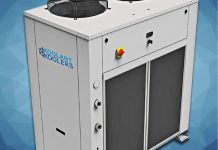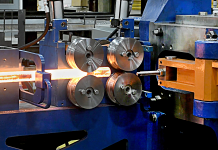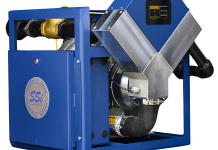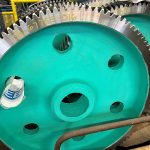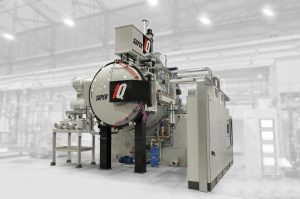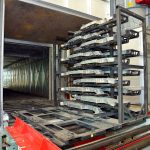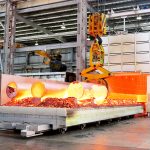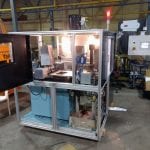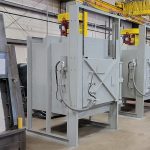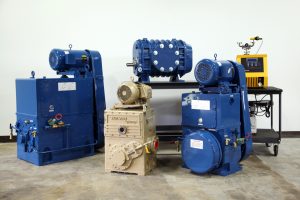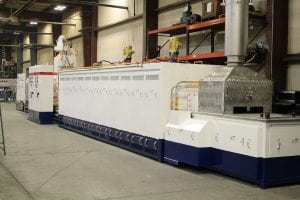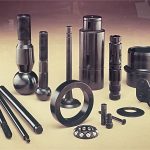A change in enthalpy is the change in energy within a system. Put simply, it is the heat exchanged between a system and its surroundings.
That’s exactly what happens within a heat-treating furnace, so it was an easy step to get to the origins of DELTA H® Technologies: DELTA H is the symbol for change in enthalpy. And DELTA H Technologies has endeavored to make itself a symbol of excellence within the ever-changing heat-treating industry.
“My wife, Mary, is a retired chemistry and physics teacher; she actually came up with the name,” said DELTA H Technologies CTO and Founder Richard Conway. “It’s kind of a cool name for anything to do with ovens and furnaces, and we’ve had that ever since, and it’s now a registered trademark.”
Single and dual chamber systems
The DELTA H® brand has been around for almost 30 years, but its current incarnation as DELTA H Technologies designs and builds dual and single chamber aerospace heat treating (DCAHT® / SCAHT®) systems with an emphasis on making various sizes of walk-in ovens and cabinet ovens, as well, according to Conway.
“We tend to be niche focused and watch for emerging technologies,” he said. “We really like the high-demand applications — especially aerospace and defense. We also do a lot with metal additive manufacturing and out-of-autoclave or vacuum composite applications — all aviation related. Our systems will meet class one for most applications, even though it’s not required. They are all about high-performance with intensive data acquisition systems.”
DELTA H’s wheelhouse is mostly custom designed work that builds on the company’s established designs, according to Conway.
“We have a whole lot of standard designs and then we modify those,” he said.
Conway emphasized that DELTA H® Technologies always strives to make the best product available.
“We focus on incomparable value and then sell for a fair price,” he said. “That’s kind of a big distinguishing thing with us. Our systems are typically heavy-duty steel construction, oversized blower shafts and fans, and we use Link-Belt bearings and Baldor motors, which are the best you can get, and the highest quality we can find for most anything on our units. We have an electrical house that does our enclosures and subpanels, and they do brilliant, breathtaking work. Our systems are masterpieces of craftsmanship, works of art in themselves, and people just recognize that. For the industries we serve, they generally have a very fast breakeven point, especially when it comes to aviation and medical applications.”
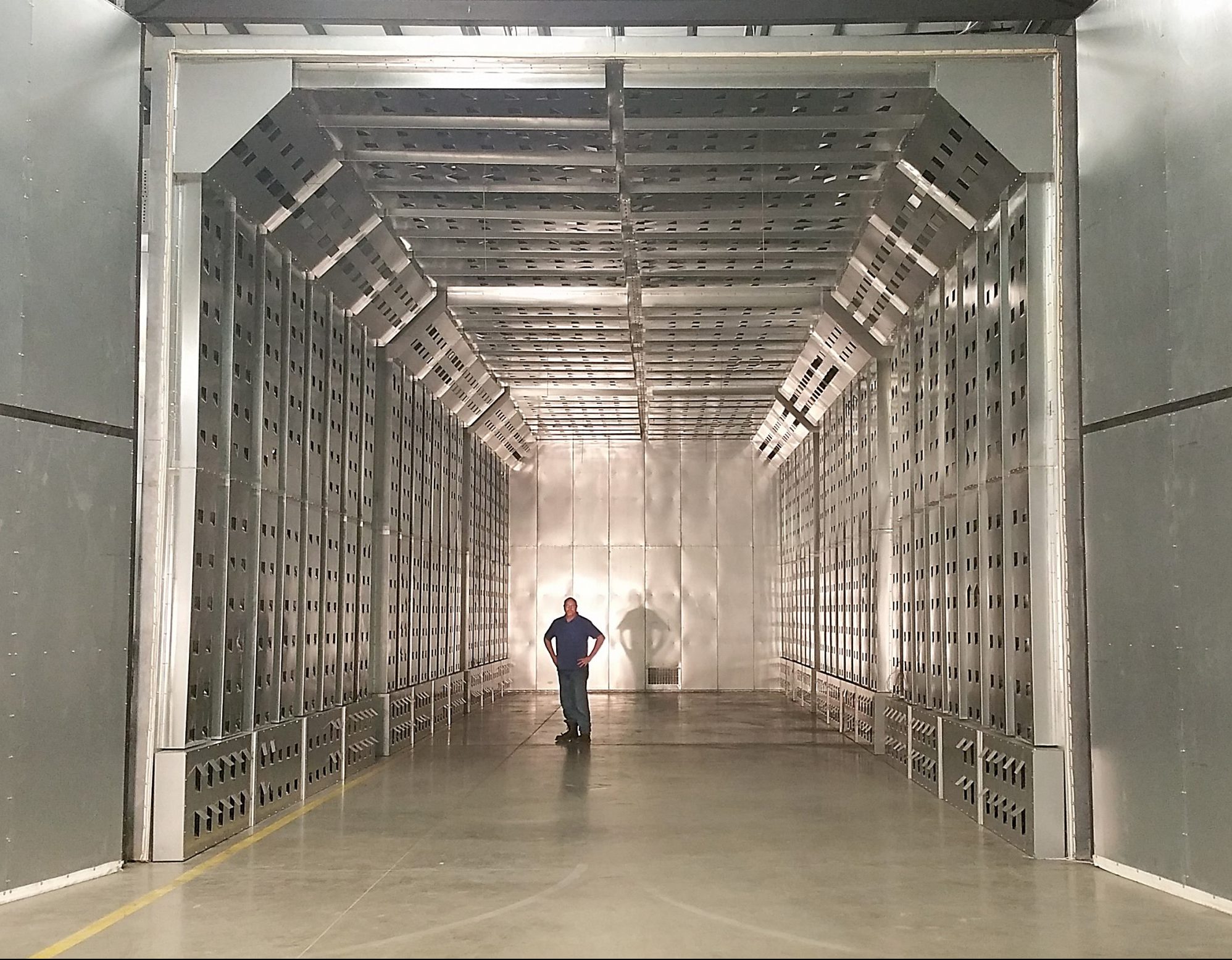
AMS standards
Since a lot of DELTA H’s work involves aerospace applications, much of what the company does revolves around AMS standards, according to Conway.
“If you would study these aerospace standards for a long time and then try to dream up the most perfect furnace system for that, it’d be one of our units,” he said. “Every time we get another idea or somebody has a suggestion, we usually quickly adopt it in our designs.”
In addition to aerospace, Conway said DELTA H also has a hand in emerging technologies as well as standards for the medical industry.
“MedAccred adopted AMS 2750 as their heat-treating standard, so we got into the medical side of things not even knowing much about it,” he said. “Now we have projects in Malaysia and a couple other parts of the world over there that involve orthopedic-type applications and heat treating that has to be compliant with AMS 2750. That’s pretty exciting stuff.”
That brings home a point of pride with Conway in that, with his decades of experience, he said he can build anything.
“I’m ready to take on anything; when we get a new challenge, we welcome it even if they might have a different spec or a different parameter,” he said. “We’re building a system right now that’s an inert atmosphere oven. It has to have rapid cooling on it, and so we have a heat exchanger inside this oven that can heat up to 1,200°F in about an hour or so, and it can also cool down to ambient again, all under atmosphere, in about two hours. That took some serious engineering to figure how to do that, and we’re getting ready to ship that this week. That was quite a challenge.”
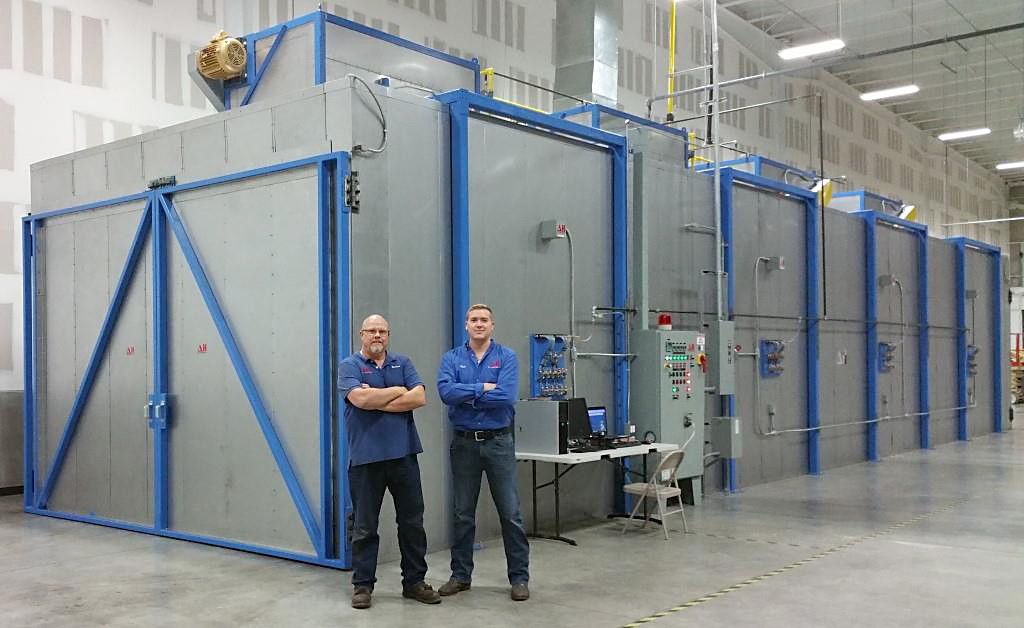
First challenge
Never backing away from a challenge is been the history of DELTA H since the beginning.
During the 1990s, Conway did a lot of consulting and technical service work, and he started building replacement control systems. In 1999, he got a call about a project at a San Antonio airfield. A customer at an aircraft maintenance-repair-overhaul (MRO) facility needed a way to heat-treat parts in order to avoid aircraft-to-ground, or AOG, situations. Sending those parts out to be heat treated had been deemed to be too expensive and time intensive.
Conway was flown in and soon informed them that the hobby kiln the facility had purchased would not work for their needs. In response, Conway designed a small, compact system that could do both solution heat treating and aluminum aging with a rollaway quench tank.
Since almost all of the parts the facility needed to quickly heat treat were less than four feet long and lightweight, Conway said he was able to design a dual chamber concept that met all of the facility’s required specifications.
“They didn’t need anything super fancy, but it just had to meet all these aerospace performance specs,” he said. “That was the whole trick, and, after that, I started selling or developing them. The second one went to another customer in San Antonio, and the third one went to Boeing in Salt Lake City, and the rest is kind of history. We’ve built them ever since and improving as necessary to meet the evolving specs. They’re used by the armed forces all over the world, and they’re used by leading aircraft OEMs, MROs, and many parts manufacturers.”

A family business
Several years after Conway had established DELTA H, Conway’s twin children, Neal and Ellen, came on board with the company in 2009, and DELTA H Technologies, LLC was born. Conway said DELTA H is very much a family business — a fact he is most proud of.
“That fall in 2009, we got a whole bunch of orders for these dual and single chamber systems, and it went on from there,” he said. “Being in a family business is hard to top. I spend about every day with my twins, Neal and Ellen, and my wife of nearly 40 years, Mary, is here most of the time. That’s really the best thing. Our youngest son, Scott, was also involved before joining the USAF and is now a full-time engineering student in Utah.”
But, if Conway had to choose a close second place, he said he also is proud of the work he does for the armed forces.
“Working with the military is very rewarding for me personally as a USAF veteran — that the military is standardizing on our equipment is very fulfilling,” he said. “We also have developed a horizontal quench system that’s used by the company supplying satellite parts for the Canadian Space Agency. We have our most advanced and biggest DCAHT systems at the Michoud Assembly Facility for NASA heat-treating tubes for this next generation of rockets and space-launch systems (SLS) in that rocket heading to the moon right now — cannot be more rewarding than that. Most major aircraft OEMs use our equipment at different facilities, and are 100 percent dependent on them, and that’s pretty rewarding as well.”
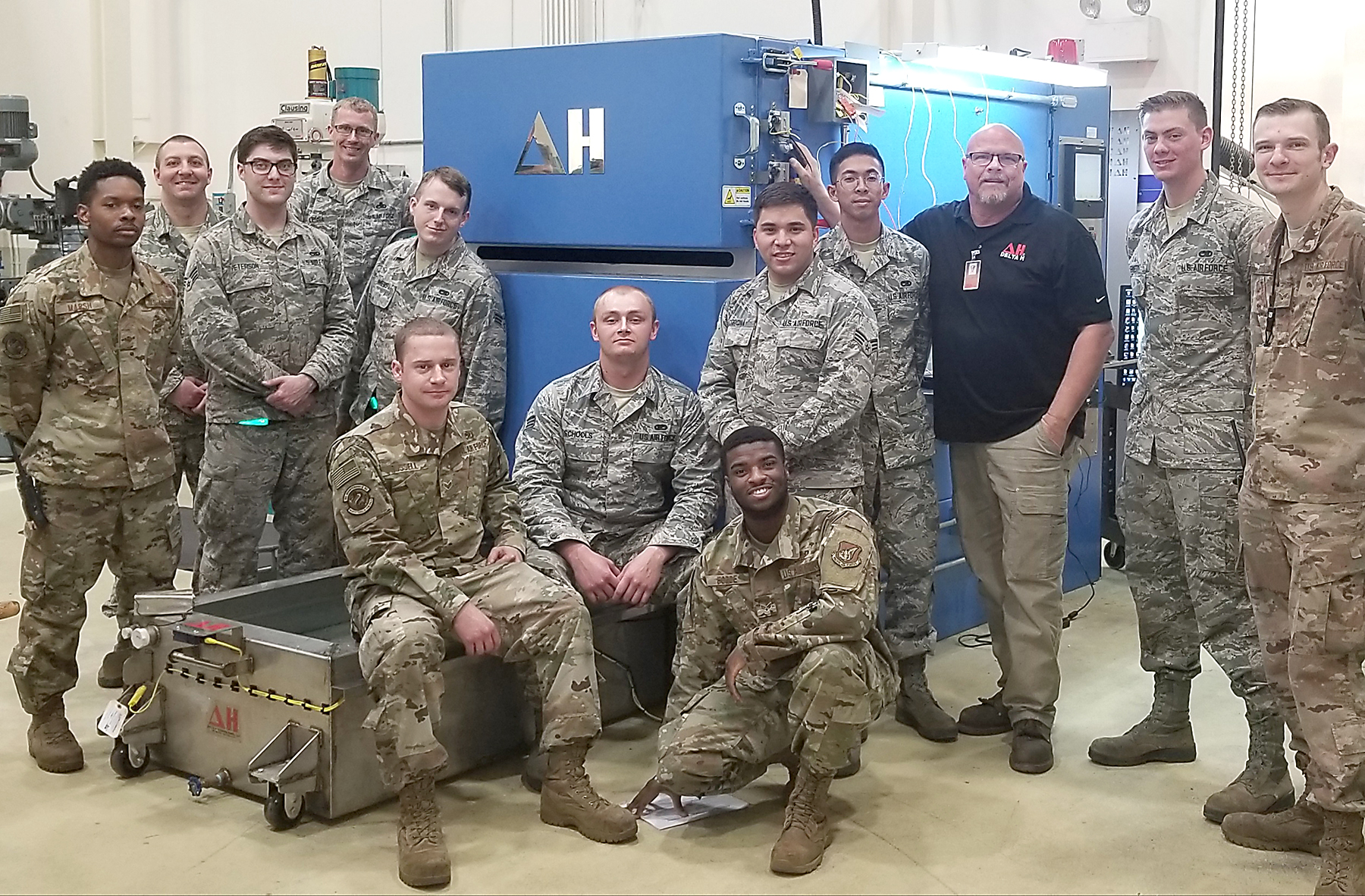
Looking to the future
Conway isn’t one to rest on his laurels, and he said DELTA H will continue to grow its product line as it looks to the future.
“We are branching into some other industries,” he said. “We’re getting a little bit more into industry-type things, for example a project with RIDGID® Tools. Those kinds of systems are interesting and can be used in industrial applications where more standard heat treating is going on. We do have quite a bit of growth in automotive as well, but I think we’re just going to keep an eye out on emerging technologies and just see what happens here over the next few years.”
All in all, it’s been a challenging and rewarding company for Conway where the results speak for themselves, but Conway’s longevity in the industry boils down to something even more elemental than that:
“We’re just having fun — I mean, it’s exciting,” he said. “We sometimes get crazy projects, and we never know who’s going to be calling or what the challenge might be. In this industry, I’ve got to have a background where I can work with these engineers and scientists and understand what they’re trying to do and then figure out what the best heat-processing application is and how we would apply a solution. We figure it out for them and then, if they like the idea, we calculate a price for it, build it, install it, and train the customer in how to run it, and then they’re off to the races.”
MORE INFO delta-h.com









